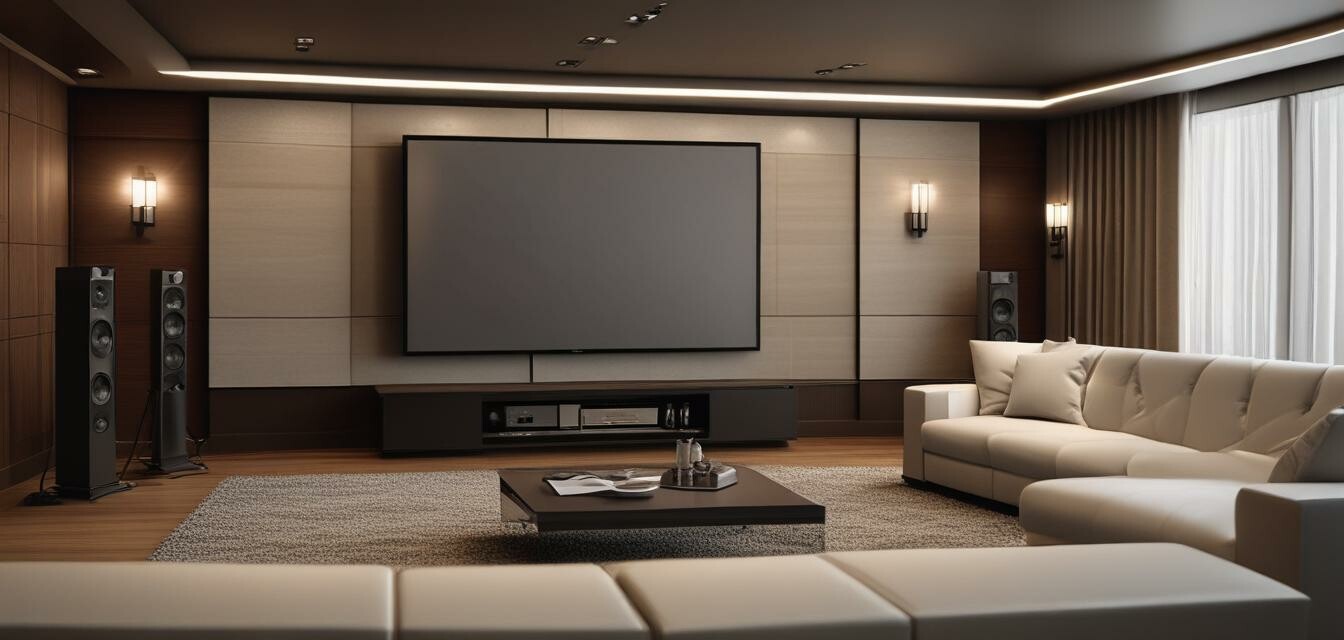
Maximizing Your Home Theater's Acoustic Performance
Key Takeaways
- Proper speaker placement is crucial for optimal sound quality.
- Acoustic treatments can significantly enhance sound clarity and minimize unwanted reflections.
- Using the right cables and connectivity solutions is vital for maintaining audio integrity.
- Configuring your home theater setup according to its unique dimensions can elevate the overall experience.
In the world of home theater systems, achieving the best audio performance can be as critical as having the latest gadgets and screens. An effective acoustic setup can make a massive difference in sound quality, ensuring that you experience the true depth of every scene. In this article, we’ll delve into various techniques for maximizing your home theater’s acoustic performance through optimum acoustics. Let's explore the fundamental steps you can take to create an enchanting auditory environment.
Understanding Acoustics in Home Theater
Before diving into practical tips, it's crucial to understand the principles of acoustics. Acoustics refers to how sound waves interact with surfaces, our ears, and various acoustic materials. In a home theater setting, multiple factors play a role in how sound travels and is perceived:
- Reflection: Sound waves bounce off walls, ceilings, and furniture, potentially creating echo or distortion.
- Absorption: Soft materials like carpets and drapes absorb sound, reducing unwanted reflections.
- Diffusion: Some surfaces scatter sound waves, helping to create a more expansive sound field.
1. Speaker Placement
Effective speaker placement is arguably one of the most crucial factors in achieving the best acoustic performance. Here are a few guidelines:
| Speaker Type | Optimal Placement |
|---|---|
| Front Speakers | At ear level, forming an equilateral triangle with the listening position. |
| Subwoofer | Positioned in a corner for maximum bass response, or use the "subwoofer crawl" technique to find the best location. |
| Surround Speakers | Placed slightly above ear level and behind the main seating area. |
For further help on speaker placement, check out our Setup Tips section.
2. Acoustic Treatments
Utilizing acoustic treatments can dramatically improve sound quality. Here are some effective options:
- Acoustic Panels: These help absorb sound waves and minimize echo. Place them at first reflection points or on the ceiling.
- Bass Traps: Ideal for corners to control low-frequency sound waves and reduce muddiness.
- Drapes and Rugs: Adding heavy drapes and area rugs can also enhance absorption and soften reflections.
3. Cables and Connectivity Solutions
Using high-quality cables can enhance performance and ensure that the sound is transmitted without interference:
| Cable Type | Benefits |
|---|---|
| Speaker Wire | Good gauge wires reduce resistance; longer runs may require thicker wire. |
| HDMI Cables | Ensure they support the audio format in use (e.g., Dolby Atmos). |
| Optical Cables | Effective for digital sound transmission, especially from non-HDMI devices. |
4. Room Configuration
Every room has unique dimensions and characteristics. Consider the following tips to configure it effectively:
- Identify the Listening Position: Position your main seating at an appropriate distance from the screen and speakers.
- Room Layout: Avoid long, narrow rooms—sharp angles can lead to sound distortion.
- Furniture Arrangement: Keep furniture away from walls and avoid clutter that might obstruct sound waves.
5. Calibration and Setup
Utilize your home theater receiver’s room calibration technology to fine-tune audio settings. You may also consider:
- Manual adjustments to speaker levels after running auto-calibration.
- Testing your setup using sound testing tracks to adjust based on preference.
For advanced setup techniques, browse through our Buying Guides.
Conclusion
Maximizing the acoustic performance of your home theater is not just desirable; it’s essential for a truly immersive experience. By considering speaker placement, utilizing acoustic treatments, choosing appropriate cables, configuring your room wisely, and carefully calibrating your system, you can transform your home theater into an audio paradise. Take the time to invest in your space, and the rewards will resonate for years to come.
Pros
- Enhances overall audio experience.
- Can result in a more immersive viewing environment.
- Provides clarity for dialogue and music.
Cons
- Initial setup may require time and effort.
- Costs can add up with treatments and high-quality cables.

